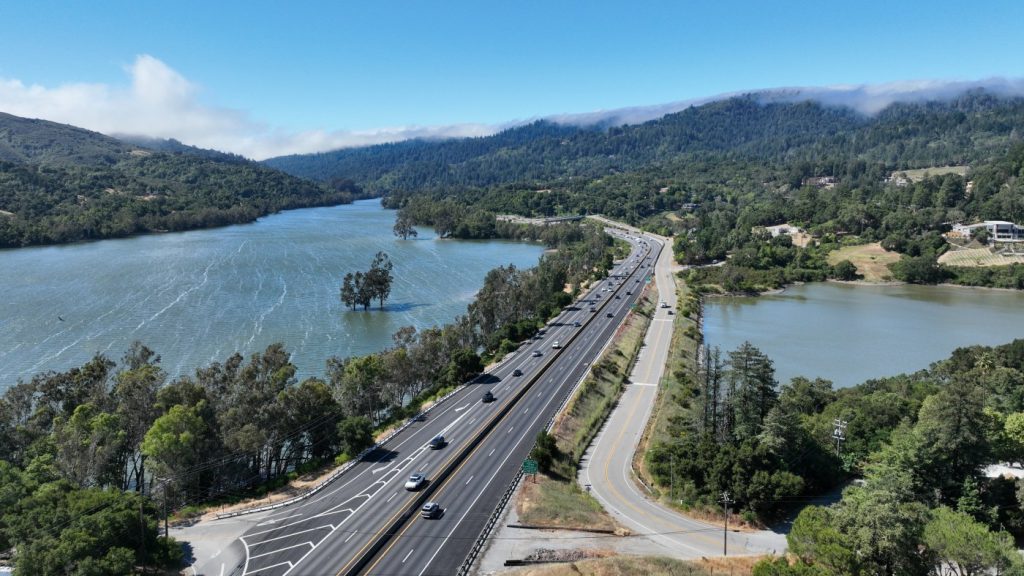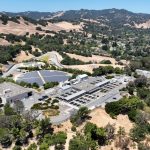Most people know Highway 17 as a winding, mountainous road that thousands of motorists use every weekend to travel from Silicon Valley to beaches in Santa Cruz.
But one particular stretch is also a notorious killing zone for animals. From 2009 to 2023, there were at least 196 collisions between vehicles and large wild animals on a 2-mile-long portion of Highway 17 between the Cats restaurant near downtown Los Gatos and the Bear Creek Road overcrossing near Lexington Reservoir.
Related Articles
Can a Vallejo bird lover do anything to protect a mourning dove nest from predators?
Mountain lion spotted in Millbrae Saturday afternoon
Fans mourn passing of Monterey Bay Aquarium’s oldest otter
Animal Life: How to stop Phoebe, a Palo Alto cat, from being attacked by Bully Boy
African elephants call each other by unique names, new study shows
Those high-speed crashes not only killed wildlife — 10 mountain lions, 181 deer, 4 bobcats, and one coyote — but they also killed one person and injured numerous others, according to data from the CHP, Caltrans and other agencies.
“That stretch is one of the hottest spots in California for animals getting hit by cars, which puts both the animals and drivers at risk,” said Fraser Shilling, a researcher at UC Davis who studies wildlife-vehicle collisions. “People drive pretty fast through there, and if they hit a deer or a mountain lion, they definitely can be injured or die.”
Hoping to safely help hikers, bicyclists, horse riders and wild animals across the treacherous 4-lane highway, a Bay Area parks agency is moving forward with a $38 million plan to build a pedestrian bridge over the roadway, along with a separate undercrossing for wildlife, at Highway 17 near Lexington Reservoir.
Last month, the board of the Midpeninsula Regional Open Space District, a government agency based in Los Altos, voted to select a preferred location for the projects. The wildlife undercrossing will be located a quarter mile north of the dam at Lexington Reservoir, and the pedestrian overcrossing will be another quarter mile farther north.
Planners say the project will connect more than 30,000 acres of parks and open space, running from San Jose’s southern edges in places like Mount Umunhum to forests and parks along Skyline Drive in Santa Cruz and San Mateo counties.
The project also will fill a 4-mile gap in the Bay Area Ridge Trail, linking a contiguous 50 miles of the 550-mile route proposed to ring the entire Bay Area, and which currently has 407 miles completed.
The wildlife undercrossing will include at least two miles of fences to keep animals off the roadway. More broadly, it is the latest example of a new trend in wildlife biology: the construction of tunnels, undercrossings, and bridges to help animals boxed in by freeways roam more freely across their natural territories in California and the West.
“Every day, people need to be able to move — to get food, to meet with other people, to find a comfortable place to be. Animals need that too,” said Neal Sharma, senior manager of the California Wildlife Program for the Wildlife Conservation Network, an environmental group in San Francisco. “When there are multiple lanes of highways with a lot of traffic, they aren’t able to. Highways can separate entire populations of species.”
Advances in motion-sensor cameras, and GPS devices have helped scientists better track how animals move and attempt to cross highways. Some of the footage goes viral, such as a video in 2020 that showed a badger and coyote playfully running through a drainage pipe on a highway near Gilroy.
In December 2022, Caltrans and the Land Trust of Santa Cruz County finished a $12 million project to build a wildlife tunnel under Highway 17 at another high-collision area about 9 miles south of the Lexington Reservoir site: Laurel Curve near Scotts Valley.
In the first year it was open, motion-sensor cameras showed that 934 animals used the undercrossing.
From February 2023 to January 2024, there were 864 black-tailed deer, 56 gray foxes, 7 bobcats, 4 mountain lions, 2 opossums and a skunk. Over the same time, there was only one animal hit by a car, a young mountain lion that went around the fencing about half a mile north of the wildlife crossing in April 2023 and was struck by a vehicle. By comparison, 34 animals were hit and killed at Laurel Curve from 2013 to 2016, including 26 deer, 2 mountain lions and 2 bobcats.
“We’re really encouraged by the large number and large variety of animals using it,” said Bryan Largay, conservation manager for the Land Trust of Santa Cruz County. “There have been herds of deer walking under it, a doe and fawns enjoying shade in it, bobcats, foxes and mountain lions. These are all animals that aren’t on the roadway, aren’t causing traffic accidents and are able to get on with their lives in a way that makes our community members feel really happy.”
The Santa Cruz land trust is planning a wildlife overcrossing on Highway 101 near Hollister. Other agencies are moving forward with plans for similar projects on Highway 152 at Pacheco Pass, and Highway 395 in the Eastern Sierra.
The biggest of them all? Construction is underway now on a $92 million wildlife bridge with vegetation over the 10-lane 101 freeway at Liberty Canyon in Agoura Hills near Los Angeles. That project, designed to keep mountain lions from going extinct in the Santa Monica Mountains area, is expected to open in early 2026 and will be the largest of its kind in the world.
Statewide, at least 532 mountain lions, 1,262 black bears, 240 elk, 59 bighorn sheep and about 45,000 other large wild animals, most of them deer, were hit and killed by vehicles in California between 2016 and 2023, according to an annual study by Shilling and other researchers at UC-Davis. Dozens of people are killed every year in collisions with wildlife on highways, and such collisions cost Californians more than $250 million a year, according to Shilling’s research.
A rendering shows the proposed wildlife crossing over the 101 Freeway in Agoura Hills. The bridge over the freeway would allow mountain lions and other animals to go from one side of the freeway to the other and would promote genetic diversity in local species. (Courtesy of National Wildlife Federation)
The next big step for the project along Highway 17 is a vote expected later this summer by the Midpeninsula open space district board to approve the final environmental documents. Caltrans will complete the design and engineering studies, and if fundraising targets are met, ground could be broken in 2026 or 2027, with the grand opening in 2028, said Leigh Ann Gessner, a spokeswoman for the open space district.
The agency has $22 million of the $38 million needed for the project in hand. Of that, $14 million was approved by Santa Clara County voters a decade ago when they approved Measure AA, a $300 million open space bond. Another $8 million came from state and federal grants. Supporters still need to raise the rest of the money.
“If you look at the big picture, this project fits in with all the other projects going on regionally, and across the state,” Gessner said. “There’s a lot of momentum and a lot of resources going into reconnecting habitats for wildlife, and providing benefits for people.”
A wildlife undercrossing off Laurel Road goes under Highway 17 in Scotts Valley, Calif., on Thursday, June 13, 2024. (Shae Hammond/Bay Area News Group)


